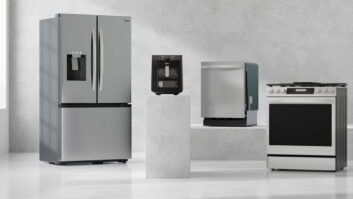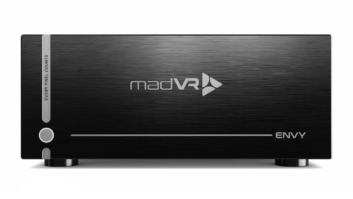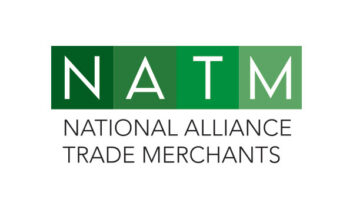Chicago – Home Technology Specialists of America (HTSA) is still often referred to as a “buying group,” but market dynamics and technology trends have drastically changed the organization’s mission.
During last week’s three-day Fall Conference here of this member-owned collective of 67 specialty A/V-custom integration businesses and their vendors at the Sofitel Chicago Water Tower, it was clear that HTSA has shifted its emphasis to something much harder to define in two or three words.
Now that the organization has effectively turned its focus toward providing marketing resources to its members, it will introduce a program for measuring the effectiveness of these tools.
“We’ve redirected our energy to helping our members find clients and retaining clients and business development,” explained HTSA executive director Bob Hana. “[HTSA] was put together as a buying group specifically so that they could leverage their collective buying, and in the days when people did stock inventory, they would actually buy and commit to a certain amount. That model has drastically changed to basically a just-in-time, here it is, here’s the project, and fulfill. So in the process of that, we’ve shifted the emphasis.”
From a keynote presentation by technology trends expert and contributing editor Michael Heiss of Residential Systems, a TWICE sister publication, to numerous one-on-one meetings between vendor partners and HTSA members and the trade media, the focus of the HTSA fall meeting was clearly on finding effective ways to generate new business through marketing programs.
“At the end of the day, we’re buying and we’re leveraging the collective power of the group to do those sorts of things with programs, but we’re also doing it more for marketing support, because we’ve got to find clients,” Hana added. “If you can find a client, then they can sell. Once they sell, then they can buy.”
Through partnerships with digital marketing and search engine optimization services, as well as printed brochures and idea books, HTSA has proactively sought ways to redirect its energy and financial resources toward helping its members find and retain clients and business development.
Discounts are important, Hana acknowledged, but almost more essential is finding ways for dealers to serve as extensions of a vendor’s own sales and marketing process.
“These manufacturers have their own brand awareness and push campaigns, but it has to be complemented with what a member might say when a client walks in,” Hana pointed out. “It’s integrated. It’s that touch point, whether it’s coming from a manufacturer or a member or that sales person or brochure. Everything has that same look and feel.”
In his opening remarks at the conference, Hana stated that HTSA now communicates to 1.6 million customers through its evolving database of current and former customers of member companies. Around 700,000 of those customers are accessible via email. Additionally, Hana noted, most of HTSA’s members rank at the top of online search results because, he said, HTSA has invested so heavily in search engine optimization (SEO), paid clicks and display ads.
“It’s huge in lead generation and huge in return on that kind of investment, and we couldn’t make that [investment] without everybody’s support from the manufacturer’s side,” Hana stated.
As its marketing tools for end-user customers have become available, the organization has turned some of its attention toward “trade-to-trade” initiatives with architects, builders, designers, and landscape professionals, as well as client sharing among members in different markets.
“I’m constantly getting calls about members contacting other members to ask, ‘I’ve got a customer over here, can you help me there, how are you doing this?’” Hana noted. “We spend a lot of time doing that, and it’s very rewarding seeing the kind of interactive that goes on there and [sharing] best practices.
Hana also noted HTSA’s recent announcement that CEDIA now recognizes its twice-yearly meetings for continuing education units (CEUs) that are a requirement for CEDIA membership.
“That’s huge for us and really speaks volumes about trying to drive what we want to do with CEDIA,” Hana added.
With these programs now established, HTSA is turning some of its attention toward better monitoring and measuring its performance by launching, in January, a measuring tool that rewards members based on their commitment to utilizing these tools. The metric will identify where marketing resources are used and when purchases are made with vendors inside HTSA rather than from outside the group. All of the metrics then will be ranked and rewards will be given to the best performers.
“There’s no downside for not doing what we see as an ideal,” Hana said, “but there are incentives to get there. The more they support vendors that are members of HTSA, the more they attend conferences, the more they interact with best practices, the more they do in marketing and use their resources, the more they are going to get rewarded.”
Once the program is established, Hana said, the organization will develop a similar initiative with its vendors, examining the effectiveness of their services, such as return policies and how well they answer the phone, etc.
So, while HTSA may still, technically, be a “buying group,” its mission is now much more.
“We still want to be called a ‘buying group’ to a prospective member that’s trying to decide which one to join,” said HTSA founding member Brian Hudkins, principal of Gramophone in Timonium and Columbia, Md. “But, there’s so much more that we do. And because we maintain a manageable size, when we gather in a room [HTSA members] probably know everybody in the room and feel confident walking over and asking them a question. That sort of thing goes a long way.”
Joe Barrett, principal of Chicago’s Barrett’s Technology Solutions, said that HTSA has helped him, as a business owner, have a “sounding board” with fellow business owners to work out new ideas and solve problems.
“It totally transformed our business from a retail walk-in type location to where most of our business comes from business development,” he said. “We have a beautiful showroom that’s 8,000 square feet, that’s truly a design center. I like to say that we’re in the ideas and possibilities business now.”
For David Wexler, principal of The Little Guys in Mokena, Ill., the No. 1 benefit of being an HTSA member is the sharing of ideas with other members. “I don’t always have to make the mistake that someone else has already made, and I can learn from them,” he said. “There’s a freedom that people have to express themselves — they don’t hold back. There’s no shame. I don’t think there’s anything more important than that.”
Jeremy Glowacki is editorial director of TWICE sister publication Residential Systems.













